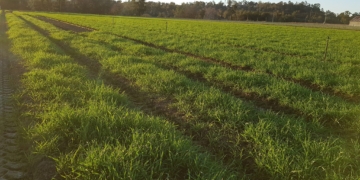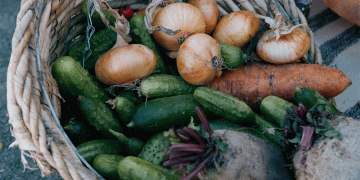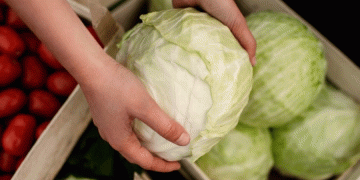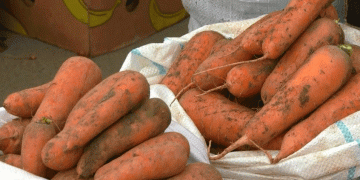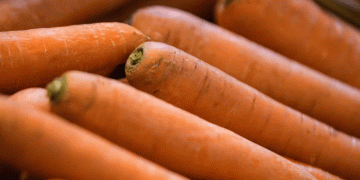The vegetable industry has a growing interest in soil health and beneficial soil microbes, including mycorrhizal fungi. Getting the benefits from mycorrhizal fungi under commercial field conditions is not easy. Intensive tillage, soil fumigation, fallow and the growing of non-mycorrhizal hosting crops – such as those in the brassica (Brassicaceae) and beet (Amaranthaceae) families – reduce the levels of mycorrhizal inoculum in the soil, and the potential for colonisation of crop roots by mycorrhizal fungi.
As part of Optimising cover crops for the vegetable industry (VG16068) – a strategic levy investment under the Hort Innovation Vegetable Fund – the project team looked at the potential of cover crops, together with commercial mycorrhizal inoculants and reduced soil tillage, to boost beneficial mycorrhizal fungi in vegetable crops. A boost is needed as mycorrhizal colonisation levels in commercial vegetable crops were found to be low. However, increasing mycorrhizal colonisation levels in vegetable crops proved difficult due to very high available soil phosphorus levels.

Key points and recommendations
A survey of mycorrhizal fungi in commercial vegetable crops in Australia indicated that practices to boost the beneficial fungi are required, with only 14 per cent of the vegetable crops sampled showing mycorrhizal associations.
Attempts to boost the mycorrhizal levels in vegetable crops using cover crops in combination with commercial mycorrhizal inoculants and reduced tillage in different field trials were not successful in our trials. However, inoculants may be beneficial under other conditions.
High available soil phosphorus in vegetable growing soils restricts mycorrhizal root colonisation of cover crops and vegetable crops.
For vegetable growers interested in improving mycorrhizal association in their cover crops and vegetable crops, the following are the “best bet” conditions for improving mycorrhizal levels:
- Soils with moderate available phosphorus levels (Olsen-P < 50 ppm).
- Strong phosphorus fixing soils (e.g., northern Tasmania and southwest WA).
- Vegetable production systems using high levels of compost.
Why promote mycorrhizal fungi? Benefits through symbiosis
Arbuscular mycorrhizal fungi are the ‘flagships’ of beneficial fungi, with their potential benefits widely recognised across the vegetable industry and growing use of mycorrhizal inoculant products.
Colonisation of plant roots by mycorrhizal fungi provides several potential benefits that include:
- Enhanced uptake of relatively immobile nutrients, in particular phosphorus and zinc
- Improved nutrition of produce.
- Improved yield.
- Biostimulant properties.
- Protection of host roots from certain pathogens.
- Improved water relations, especially under nutrient limitation.
- Reduced transplant shock.
- Improved soil aggregation via glomalin.
Mycorrhizal fungi are obligate symbiotic fungi with more than 15 genera and 150 species. In agricultural soils, mycorrhizal fungi can make up between five and 50 per cent of the biomass of soil microbes.
Virtually all soils contain some mycorrhizal fungi, but inoculum density (spores, root fragments and hyphae) and the fungal species vary. To survive and grow, mycorrhizal fungi require a living host plant that provides food (photosynthates) in exchange for the benefits associated with the symbiotic relationship.
The association between mycorrhizal fungi and the plant is assessed by measuring root colonisations levels. This involves taking root samples from field crops, staining to highlight the mycorrhizal fungi and examining roots for mycorrhizal structures (hyphae, arbuscles or vesicles). This is then used to calculate the percentage of roots colonised.
Mycorrhizal fungi in commercial vegetable crops – does it need boosting?
Mycorrhizal colonisation levels were found to be low commercial vegetable crops. Only 14 per cent of the vegetable crops sampled had mycorrhizal associations (refer to Table 1). Of those crops with mycorrhizal associations, root colonisation levels were moderate (Table 1, Figure 1). There were 57 vegetable crops sampled across 22 farms. Root samples were taken from field-grown crops in Victoria, New South Wales, South Australia, Western Australia and Tasmania. Tunnel house soil-grown capsicum and eggplants were also sampled in South Australia.
Boosting mycorrhizal associations
In four field trials, we tried to boost mycorrhizal colonisation in either cover crops or leeks or corn using a range of cover crops together with mycorrhizal inoculants and reduced tillage.
Cover crops had low levels of mycorrhizal root colonisation (Table 2) and did not boost mycorrhizal levels in the soil or the following vegetable crops. Sorghum was the only cover crop which had moderate mycorrhizal root colonisation (> 10%).
Adding mycorrhizal inoculum to either the cover crop before the vegetable crop or directly to the vegetable crop did not increase root colonisation levels of the corn or leek at harvest or crop growth and yield.

High soil phosphorus levels limit mycorrhizal fungi
High available soil phosphorus levels (Olsen-P > 100 ppm) are common in vegetable growing soil. Such high available soil phosphorus levels can restrict root colonisation of cover crops and vegetable crops. Adding mycorrhizal inoculants did not overcome this limitation. In soils with Olsen-P values over 50 ppm the host plant, which controls the colonisation process, typically does not allow the mycorrhizal fungi into the root.
We did find some cover crops and vegetable crops with acceptable root colonisation rates. These sites typically had lower available phosphorus levels. For example, an oat cover crop with a 78 per cent root colonisation rate had an Olsen-P value of 7 ppm.
For vegetable growers interested in improving mycorrhizal association in their cover crops and vegetable crops, we suggest the following ‘best bet’ conditions:
- Soils with moderate available phosphorus levels (< 50 ppm Olsen-P; approximate conversions for other soil tests: < 140 ppm Colwell-P, < 110 ppm Bray-P or < 105 ppm Mehlich-3-P).
- Strong phosphorus fixing soil (e.g., Ferrosols in northern Tasmania; soils in southwest WA). Look for soils with either a high Phosphorus Retention Index or a Phosphorus Buffering Index.
- Vegetable production using high levels of compost. In South Australia, we consistently observed high root mycorrhizal colonisation rates in Solanaceae crops grown in protected cropping, despite the use of soil fumigants. These systems all used high levels of compost combined with mycorrhizal inoculants.
These ‘best bet’ conditions provide a guide to those growers wanting to boost mycorrhizal fungi levels. However, we were unable to demonstrate what benefits of mycorrhizal fungi can be provided to vegetable crops under commercial conditions.
For more information on cover crops produced by project VG16068, please visit the Soil Wealth website and look for the cover crop-related resources.
This project has been funded by Hort Innovation using the vegetable research and development levy and contributions from the Australian Government.
